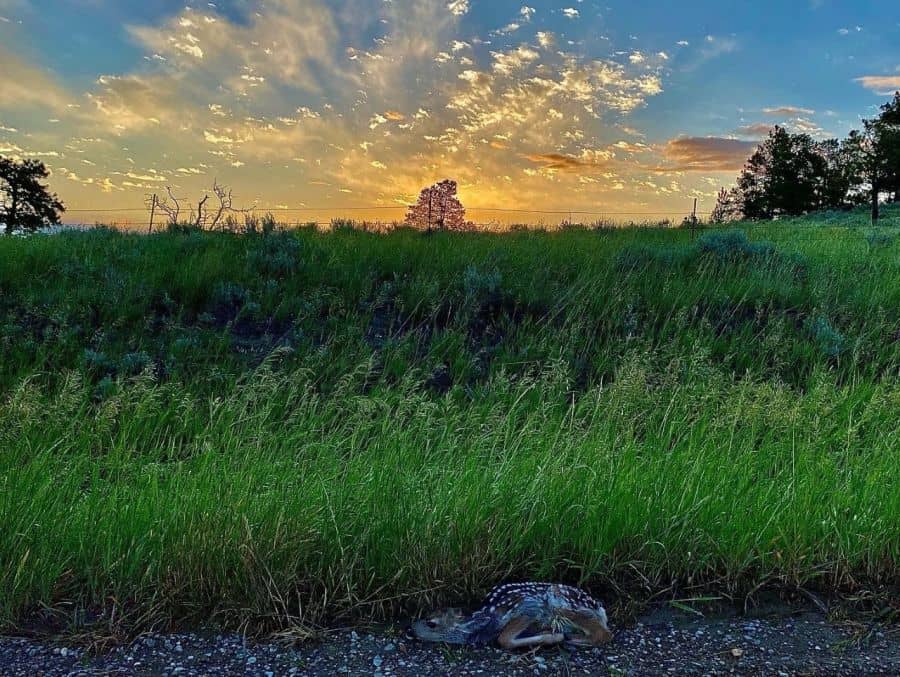Since Pheasants Forever’s inception 40 years ago, they have built unbreakable bonds with conservation and agricultural minded communities. In my opinion, none are as unique as the partnerships formed with local, rancher-led groups like Winnett ACES based in Petroleum County, Montana. Winnett ACES is a grassroots non-profit organization that is dedicated to conservation and agricultural and community vitality in the Musselshell Plains of Central Montana. Winnett ACES was granted 501(c)(3) status in 2019 and has made impressive impacts on conservation in a short amount of time.
Conservation
Pheasants Forever (PF), Northern Great Plains Joint Venture (NGPJV), NRCS, Partners for Fish and Wildlife, Nature Conservancy, World Wildlife Fund and others have partnered with ACES to tackle conserving Montana’s extensive and intact grasslands as well as the wildlife and ranchers who call it home. My position as the Wildlife Biologist here in Winnett helps bring on-the-ground conservation, wildlife, technical expertise, grant dollars, and ranchers closer to the goal of ecological resilience for our grassland-based communities. The partner support for the position has helped create an impressive impact in the community and on the landscape. Water pipeline, water tanks, pronghorn migration fence modifications, sage grouse fence modifications, and native grass seedings represent the bulk of our conservation efforts thus far:
- 32 miles of fence marked for sage grouse
- 66 miles of new and modified fence for antelope migration
- 2,275 acres of tilled ground planted back to native grass and forbs
- 19 water tanks
- 16 miles of water pipeline for wildlife and livestock
These improvements account for:
- 24,375 acres directly impacted for conservation
- $173,980.82 direct cost to ACES and partners
- $368,563.48 direct cost to participating producers
The participating producers covered 69% of the total cost of the conservation improvements, showing the prodigious commitment ranchers make for conservation and wildlife.
Agricultural and Community Vitality
Conservation and community enhancement go hand in hand and often benefit each other. Winnett ACES is making strides to revitalize the community aspects of the town of Winnett, all while retaining its rich history. Currently, there are limited businesses and opportunities for community members to interact with each other. Without robust businesses and shops in a town, there isn’t a strong draw for kids to come back to the area and take over agricultural operations. Limited opportunities for the next generation and no succession for family ranches often means big losses for wildlife, conservation, and communities. Through grants, generous donors, and the hard work of the Winnett ACES team, we have set out to revitalize Winnett by first restoring the historic Odd Fellows building with apartments and adding a local bistro, coffee shop, ice cream parlor, and breakfast nook. A new community building is also currently being built in Winnett. If you build it, they will come! A strong Winnett community allows for improved agricultural operations and improved wildlife conservation.
Farmers, ranchers, and private landowners have always been among the most valuable partners for ACES, NGPJV, and PF. These land stewards work with us to protect the grasslands and other wildlife habitats on their property by enrolling land in programs such as the ACES Rangeland Improvement Cost Share, EQIP, N-GRIP, RSVP, and now the BIG HIP RCPP (Regional Conservation Partnership Program). These partnerships support what is known as the North American Model of Wildlife Conservation, which is made up of landowners, sportsmen, and other conservation partners. This model is the idea that wildlife is public property and as such is a shared resource that must be conserved for the greater good.
Odd Fellows Hall Fundraising
| Grants | $22,250 |
| Individual Donations | $72,800 |
| Fundraising | $35,545 |
| Total | $130,595 |
Partnerships
Partnerships are the glue that holds this collective conservation, agricultural, and community ideology effort together.
Working together, ACES and partners have built an extensive habitat network that helps sustain not only ungulates but also grassland birds such as Sprague’s Pipit, Chestnut-collared Longspur, Thick-billed Longspur, and Baird’s Sparrow. In addition, sportsmen and other outdoor enthusiasts have volunteered to help with conservation projects and have benefited immensely from this habitat, some of which is open for public hunting through Block Management or BLM properties.
Habitat conservation and biologist positions such as mine would not be possible if it were not for the collaborative partnership efforts by ACES, PF, NGPJV, NRCS, The Nature Conservancy, Partners for Fish and Wildlife, World Wildlife Fund, Petroleum County Conservation District and, above all, the dedicated farmers and ranchers of Montana.

